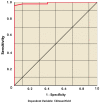A Review of the Chemical Extraction of Chitosan from Shrimp Wastes and Prediction of Factors Affecting Chitosan Yield by Using an Artificial Neural Network
- PMID: 36354998
- PMCID: PMC9693855
- DOI: 10.3390/md20110675
A Review of the Chemical Extraction of Chitosan from Shrimp Wastes and Prediction of Factors Affecting Chitosan Yield by Using an Artificial Neural Network
Abstract
There are two viable options to produce shrimp shells as by-product waste, either within the shrimp production phases or when the shrimp are peeled before cooking by the end user. This waste is considered a double-edged sword, as it is possible to be either a source of environmental pollution, through dumping and burning, or a promising source from which to produce chitosan as a biodegradable, biocompatible biopolymer which has a variety of agricultural, industrial, and biomedical applications. Chitosan is a deacetylated form of chitin that can be chemically recovered from shrimp shells through the three sequential stages of demineralization, deproteinization, and deacetylation. The main aim of this review paper is to summarize the recent literature on the chemical extraction of chitosan from shrimp shells and to represent the physicochemical properties of chitosan extracted from shrimp shells in different articles, such as chitosan yield, moisture content, solubility, ash content, and degree of deacetylation. Another aim is to analyze the influence of the main predictors of the chemical extraction stages (demineralization, deproteinization, and deacetylation) on the chitosan yield percentage by using a multilayer perceptron artificial neural network. This study showed that the deacetylation alkali concentration is the most crucial parameter, followed by the concentrations of acid and alkali of demineralization and deproteinization, respectively. The current review was conducted to be used in prospective studies for optimizing the chemical extraction of chitosan from shrimp wastes.
Keywords: chemical extraction; chitosan; neural networks; shrimp shells.
Conflict of interest statement
The authors declare that they have no known competing financial interests or personal relationships that could have influenced the work reported in this paper.
Figures









Similar articles
-
Isolation and optimization of the method for industrial production of chitin and chitosan from Omani shrimp shell.Carbohydr Res. 2020 Jun;492:108001. doi: 10.1016/j.carres.2020.108001. Epub 2020 Apr 2. Carbohydr Res. 2020. PMID: 32259704
-
Chitin and chitosan production from shrimp shells using ammonium-based ionic liquids.Int J Biol Macromol. 2019 Jun 1;130:818-826. doi: 10.1016/j.ijbiomac.2019.03.018. Epub 2019 Mar 3. Int J Biol Macromol. 2019. PMID: 30840869
-
Seafood Waste as Attractive Source of Chitin and Chitosan Production and Their Applications.Int J Mol Sci. 2020 Jun 16;21(12):4290. doi: 10.3390/ijms21124290. Int J Mol Sci. 2020. PMID: 32560250 Free PMC article. Review.
-
Production, properties, and some new applications of chitin and its derivatives.Crit Rev Food Sci Nutr. 2003;43(2):145-71. doi: 10.1080/10408690390826473. Crit Rev Food Sci Nutr. 2003. PMID: 12705640 Review.
-
Advances in extraction, utilization, and development of chitin/chitosan and its derivatives from shrimp shell waste.Compr Rev Food Sci Food Saf. 2024 Sep;23(5):e70008. doi: 10.1111/1541-4337.70008. Compr Rev Food Sci Food Saf. 2024. PMID: 39223761 Review.
Cited by
-
Effects of Shrimp Shell-Derived Chitosan on Growth, Immunity, Intestinal Morphology, and Gene Expression of Nile Tilapia (Oreochromis niloticus) Reared in a Biofloc System.Mar Drugs. 2024 Mar 28;22(4):150. doi: 10.3390/md22040150. Mar Drugs. 2024. PMID: 38667767 Free PMC article.
-
Bioactive Molecules from the Exoskeleton of Procambarus clarkii: Reducing Capacity, Radical Scavenger, and Antitumor and Anti-Inflammatory Activities.Biomolecules. 2024 Dec 20;14(12):1635. doi: 10.3390/biom14121635. Biomolecules. 2024. PMID: 39766342 Free PMC article.
-
Bio-Based and Biodegradable Polymeric Materials for a Circular Economy.Polymers (Basel). 2024 Oct 28;16(21):3015. doi: 10.3390/polym16213015. Polymers (Basel). 2024. PMID: 39518225 Free PMC article. Review.
-
Utilization of natural and waste sources for synthesis of cellulose, chitin, and chitosan for a suitable environment.RSC Adv. 2025 Jul 23;15(32):26276-26301. doi: 10.1039/d5ra02896e. eCollection 2025 Jul 21. RSC Adv. 2025. PMID: 40703073 Free PMC article. Review.
-
Simultaneous Optimization of Deacetylation Degree and Molar Mass of Chitosan from Shrimp Waste.Polymers (Basel). 2024 Jan 6;16(2):170. doi: 10.3390/polym16020170. Polymers (Basel). 2024. PMID: 38256969 Free PMC article.
References
-
- Moss S.M., Moss D.R., Otoshi C.A., Arce S.M. An integrated approach to sustainable shrimp farming. Asian Fish Sci. 2010;23:591–605. doi: 10.33997/j.afs.2010.23.4.012. - DOI
-
- Issue-14-Euroshrimp-Newsletter-European-Shrimp-Production(1) [(accessed on 15 March 2022)]. Available online: https://www.euroshrimp.net/14-european-shrimp-production-in-2020/
-
- Valenti W., Kimpara J.M. Measuring Aquaculture Sustainability. World Aquac. 2011;42:26–30.
-
- FAO Environmental Impact Assessment and Monitoring in Aquaculture. 2009. [(accessed on 17 May 2022)]. Available online: http://www.fao.org/3/i0970e/i0970e00.pdf.
Publication types
MeSH terms
Substances
LinkOut - more resources
Full Text Sources
Research Materials
Miscellaneous

